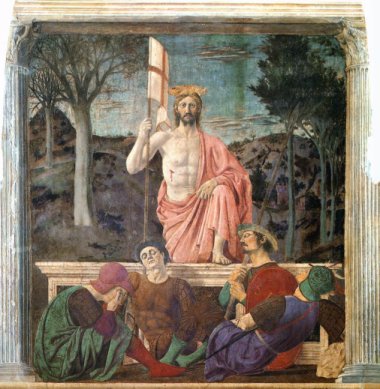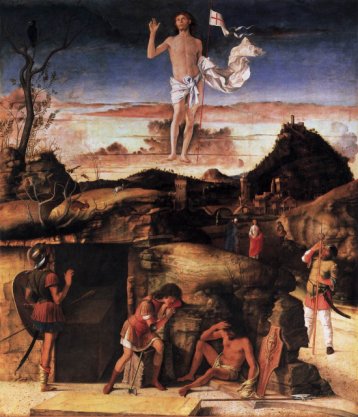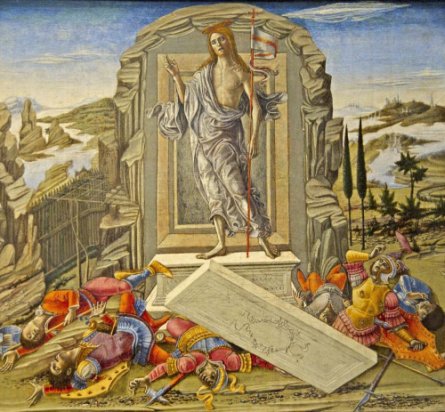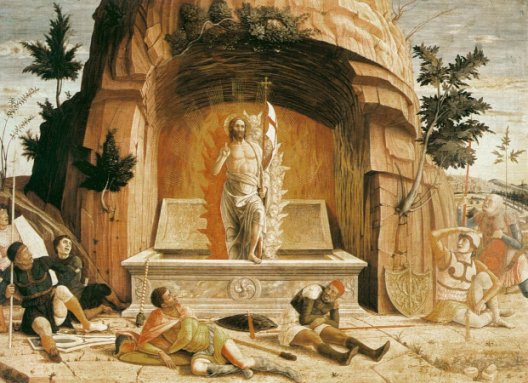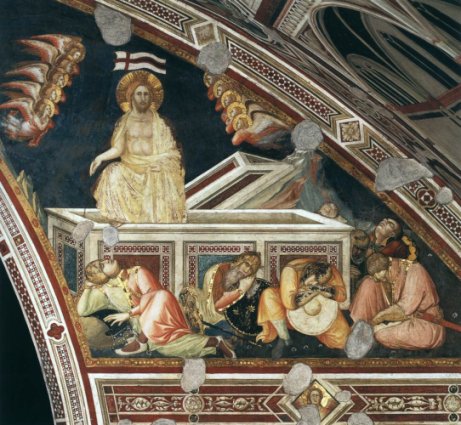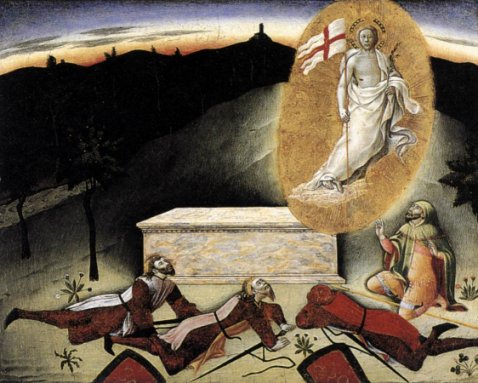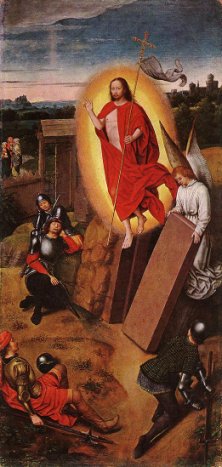|
The Passion of Christ |
|
|
The Resurrection |
|
|
'Now the next day,
that followed the day of the preparation, the chief priests and
Pharisees came together unto Pilate, Saying, Sir, we remember that that
deceiver said, while he was yet alive, After three days I will rise
again. Command therefore that the sepulchre be made sure until the third
day, lest his disciples come by night, and steal him away, and say unto
the people, He is risen from the dead: so the last error shall be worse
than the first. Pilate said unto them, Ye have a watch: go your way,
make it as sure as ye can. So they went, and made the sepulchre sure,
sealing the stone, and setting a watch. |
|
|
|
|
|
This painting is well worth the journey -
pilgrimage if you like - to Sansepolcro. It is in the Museo Civico, but,
unusually, this was the building it was actually painted for, originally
the equivalent of a town hall. The painting is so important to the
town that is is visible through a glass door even when the museum is
closed. The twentieth century tale of how the building - and the fresco -
survived the Second World War is an inspiring one. A British soldier -
Anthony Clarke - had read Aldous Huxley's description of of the Fresco as
the best picture in the World. When he was ordered to bombard Sansepolcro, he refused to do so. He got away with this disobedience and has
become something of a local hero, and there is now a 'Via Anthony Clarke'
in Sansepolcro - something of a mouthful, perhaps, for local Italians. Clearly there is no rock-cut tomb in Piero's image, and I have discussed in the page on the Entombment why an altar-like sarcophagus was considered more appropriate. But not always; these two images stick to the original story. |
|
|
|
|
|
These images raise two more issues. A few
versions of the Resurrection show the soldiers lying crushed under the
stone, or the sarcophagus lid in the case of the Benvenuto. This has no
biblical authority whatever, though no doubt viewers would have enjoyed
the rather humorous element. The second issue refers back to the rather off-hand comment I made at the top off the page. In the Benvenuto, Christ walks from the tomb; in the Bellini, he ascends into the sky. The distinction is perhaps more theologically significant than it first appears. The key to the Resurrection story is that Christ returns as a living man; this is the heart of the story of the meeting on the road to Emmaus. Christ is no ghost. Bellini's image is more suggestive of the Ascension, Christ as a spiritual rather that a physical being; Christ is literally risen. The two natures of Christ - Human and spiritual - is shown in various ways in art, but here shouldn't the human side be emphasised? The gospel stories can't help here - artists - or those commissioning the paintings - had to make up their own minds how the resurrection itself would be portrayed. Some more images |
|
|
|
|
|
|
|
